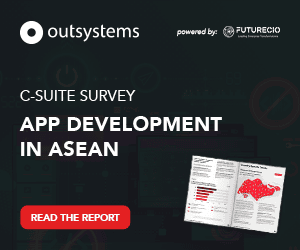A call for collaborative action
Asia stands on the verge of a more AI-driven economy, hence, it is essential for governments and industries to collaborate to ensure a smooth and equitable transition. By a timely implementation, thoughtful policies and practices across various societal sectors, Asia can fully harness the advantages of AI while mitigating its potential risks.
Empowering workers
Government policies should and will play a crucial role in facilitating a smooth transition to an AI-driven economy for workers. These policies might include offering financial support for businesses adopting AI technologies through incentives and grants, establishing guidelines to ensure ethical AI use and protect workers' rights, and funding initiatives to upskill the workforce and integrate AI education into school curricula.
For instance, Singapore's SkillsFuture initiative funds AI-related courses to help workers upgrade their skills. Additionally, implementing measures to support displaced workers through unemployment benefits and retraining programs is essential.
Moreover, it is important to ensure AI technologies do not perpetuate unsustainable behaviours, such as enticing retail customers to purchase unnecessary items or promoting irresponsible usage that leads to phenomena like doom scrolling.
Education for tomorrow
Educational initiatives are necessary to prepare the future workforce in Asia for AI-centric job roles, encompassing a broad spectrum of learning opportunities. Early education should integrate AI and STEM subjects into primary and secondary school curricula. For example, China has introduced AI textbooks in its secondary schools to prepare students from a young age.
Tertiary education programs should expand to include AI, machine learning, and data science. Universities in Japan have begun offering specialised AI degrees to meet this need. Vocational training should provide specialised courses for technical skills directly applicable to AI-centric roles.
Lifelong learning should be encouraged by offering online courses, workshops, and certification programs to keep the workforce up to date. Collaborating with industry leaders can align educational content with market needs and trends.
Integrating AI with human insights
Organisations can ensure that AI implementation enhances rather than undermines employee morale and job satisfaction by maintaining transparent communication and engaging employees in the AI integration process to foster a sense of ownership and acceptance.
For instance, companies like DBS Bank in Singapore have held town halls and workshops to involve employees in their AI initiatives. Providing support and training programs to help employees adapt to new technologies and roles is crucial.
Recognising and rewarding employees' efforts to embrace AI also enhances morale. HR and senior leadership should take responsibility for overseeing AI implementation, with a dedicated task force to monitor progress and address concerns.
Navigating workforce displacement
To reskill workers displaced by AI technologies in Asia's rapidly evolving job market, tailored reskilling programs focusing on skills needed in AI-driven industries should be developed. Career counselling and support should guide displaced workers toward new opportunities.
Malaysia has launched the eRezeki and Global Online Workforce (GLOW) programs to help workers find new opportunities in the digital economy. Partnering with educational institutions to offer relevant courses and certifications, as well as assisting with job placement through partnerships with companies seeking new talent, are key strategies.
HR should collaborate with COOs and functional heads to assess skills gaps, create reskilling plans, and ensure smooth transitions without disrupting operations.
Balancing productivity and well-being
"Strategies to foster collaboration between human workers and AI systems to maximise productivity and efficiency include designing integrated workflows that seamlessly incorporate AI systems into daily tasks, developing human-centric AI tools that are user-friendly and enhance human capabilities, and offering comprehensive training to help employees understand and utilise AI systems effectively." John Rafol
For example, companies like Alibaba use AI to complement human workers in tasks such as customer service and logistics.
Implementing feedback systems where employees can share their experiences and suggestions for improvement and fostering a collaborative culture that values innovation and continuous learning are also important.
Functional leaders can measure the impact of AI on workforce productivity without compromising employee well-being by establishing clear performance metrics to track productivity improvements resulting from AI.
This should also include conducting regular employee surveys to gauge satisfaction and well-being, and using health monitoring tools to track stress levels and overall wellness. Implementing workload management tools to ensure tasks are evenly distributed and prevent burnout, along with scheduling regular reviews to assess the impact of AI on both productivity and employee well-being, adjusting as needed, are essential steps.
Crafting an equitable AI-driven economy
When the above aspects are adequately addressed, Asian organisations can navigate the complexities of AI integration, ensuring that it enhances rather than disrupts the workforce and industry.
While it is never easy, much like an orchestra where every piece needs to click together harmoniously to create a beautiful symphony, the focus on education, reskilling, ethical implementation, and collaborative strategies will be critical in harnessing the full potential of AI while safeguarding the interests and well-being of employees.
This comprehensive approach will help create a balanced and sustainable AI-driven economy that benefits all stakeholders involved.




